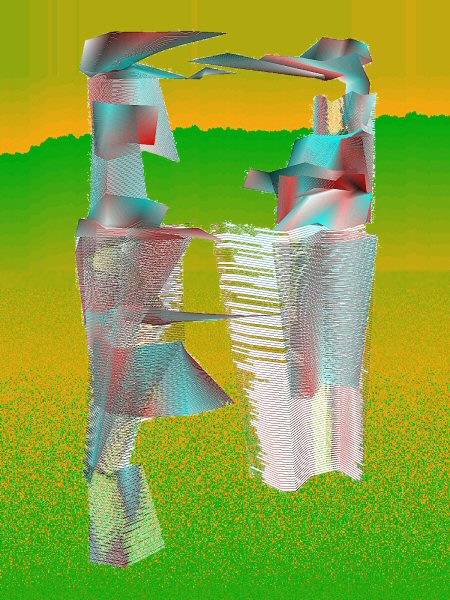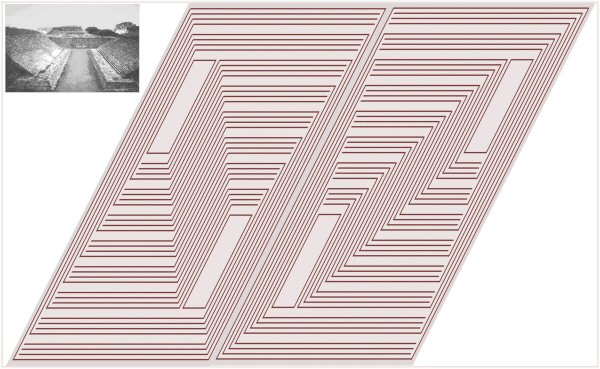Alan Sutcliffe
Programmer, maker, and editor of PAGE, bulletin of the Computer Arts Society, Computer Arts Society
nsutcliffe@ntlworld.com
Mainly I work by devising algorithms for composing graphics, with only a general idea of what the outcome will be. My works may be evocative but not expressive, except that everything we do is expressive. The titles I give works are best ignored. Increasingly I look for seemingly simple sets of rules that have complex and unpredictable outcomes. I prefer to do little or no processing of the output from my programs and only for simple actions such as adding texture to an area or putting a border round a picture. My approach is based on a sense of what will work rather than an attempt to model so-called creative processes. I compose music in a similar way. Sometimes I make premeditated works in the conventional way, and these may not involve programming nor have a mathematical connection. The works here are linked by a theme of twinning.
“Aspire ”
2008, Computer graphic, 24" x 20"

My paper for Bridges 08 is about Doyle spiral circle packing. This graphic arose from workng on the paper, though only in that circles are drawn with their centres on two spirals. The sense of depth depends on the order in which the cicles are drawn in each spiral. The only other differences between the two halves of the graphic are the arbitrary colouring of the circles and obvious mirroring. Their spacing ensures that the spirals meet neatly.
“ Four Limbs ”
2007,Computer graphic, 24" x 20"

My paper for the 2007 Bridges Conference was about a method of drawing to give the appearance of solid bodies. This work arose from a study to extend that method. Limb-like structures that appeared in some of the original graphics were attenuated and end in hand-like stuctures. This grapic shows two such constructs, each with four limbs. The background is generated by simply structured random placement of elements. Each run of the program gives a different graphic of the same type.
“MirrorMirror ”
2004, Computer graphic, 20" x 24"

In each half of this graphic the positions of points on a rectangular grid are displaced at random. A colour is assigned to each grid point by the program. Each set of four adjascent points defines a quadrilateral. The edges and internal points of each quadrilateral are given smoothly shading colours based on the colours at the vertices. Each half of the graphic is the colour negative of the other. Each run of the program gives a different graphic of the same type.
“ Love Bites”
2004, Computer Graphics, 20" x 24"

When the grid points in MirrorMirror are moved by distances greater than the original distances between them then the shading rules break down. Forms such as those shown here appear. The program was altered to put two such forms facing each other. A separate piece of code composed a background having the suggestion of a skyline and other features of a landscape. Each run of the program gives a different graphic of the same type.
“ Monte Aban Ball Court ”
2003, Computer graphic, 24" x 20"

Josef Albers' precice geometrical etching To Monte Aban is easy to measure and code for a simple program. Here it is mirrored, skewed and tinted to enhance its sense of solid form. Inset is a photograph of the Ball Court at the Mayan site at Monte Alban in Mexico. Albers taught at the Bauhaus and like many others fled to America before WWII. He spent some years teaching in Mexico. This work is a tribute to the genius of Josef Albers as an artist and designer.